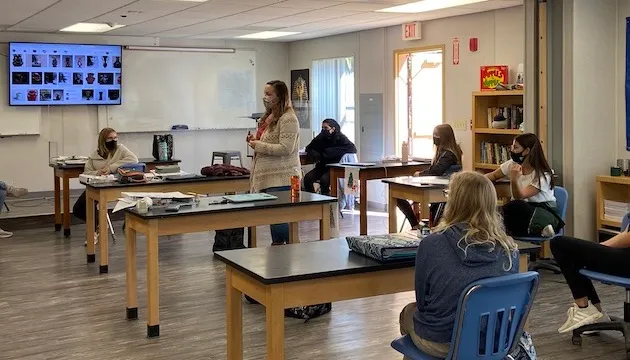Activities to Teach Students to Identify Human and Physical Features

As geography is an important part of the school curriculum, it has become essential for school teachers to find creative ways to teach their students about human and physical features. This helps students gain an understanding of their physical environment and how it affects human life, as well as cultural and social development. So, what are human and physical features?
Human features are made by humans such as buildings and monuments while physical features are already present in nature. Examples of the physical feature include mountain ranges, rivers, beaches and lakes.
1. Geography Scavenger Hunt
This activity encourages students to work in teams, and they improve their skill in identifying human and physical features. Teachers can divide the class in groups and assign a geography scavenger hunt. Students will be given a list of human and physical features to find in the school compound, nearby roads and buildings, and around the neighborhood.
Once the items are located and identified, the students will be asked to create a collage or a presentation of what they have found. This activity makes it easier for the students to recognize the difference between human and physical features.
2. “Guess the Feature”
In this game, a teacher can randomly show the students photographs of different geographic landmarks. The students would then have to guess if the picture shows a human feature or physical feature. The teacher can use various photos to make the rounds interesting and more challenging. This is a fun way for the students to learn about the different types of features and concepts they have studied in class.
3. “Around the World”
This is a strategy that tests the knowledge of the students about different places worldwide. Teachers can divide the students into small groups and give each group a map of a different country. The students then align the physical and human features for the region they are assigned to. They will research and identify the country’s mountain ranges, rivers, beaches and it’s significant items.
This activity will spark the curiosity of the students and motivate them into discovering new places and features.
Conclusion
Teaching of geography must be beyond classroom walls. Geography activities such as scavenger hunt, guessing games, etc. will make geography more engaging and interactive to students. The curriculum must be interactive and demonstrate to students the importance of geography in mapping the world on an individual, national and international level. The practical sessions will enhance student’s creativity and problem-solving abilities.




